On Our Way (Page Two)
Did you know? - The Pacific Surfliner is a 350-mile (563 km) Amtrak passenger train route serving communities on the coast of Southern California between San Diego and San Luis Obispo. With 2.59 million passengers in fiscal year 2009, this is Amtrak's third-busiest service and the most heavily-traveled line outside of the Northeast Corridor.
The Los Angeles-to-San Diego portion of the Pacific Surfliner route was once served by the Santa Fe's San Diegan passenger trains (see "Operations" below); the Pacific Surfliner name was bestowed on the route on June 1, 2000.

She'll be coming around the mountain (corner) when she comes!
Did you know? - Although the first printed version of the song appeared in Carl Sandburg's The American Songbag in 1927, the song is believed to have been written during the late 1800s. The song was based on an old Negro spiritual titled "When the Chariot Comes", which is sung to the same melody. During the 19th century it spread through Appalachia where the lyrics were changed into their current form. The song was later sung by railroad work gangs in the Midwestern United States in the 1890s. The song's style is reminiscent of the call and response structure of many folk songs of the time, where one person would shout the first line and others repeat. ~Wikipedia

Scary when you cannot see the engine!
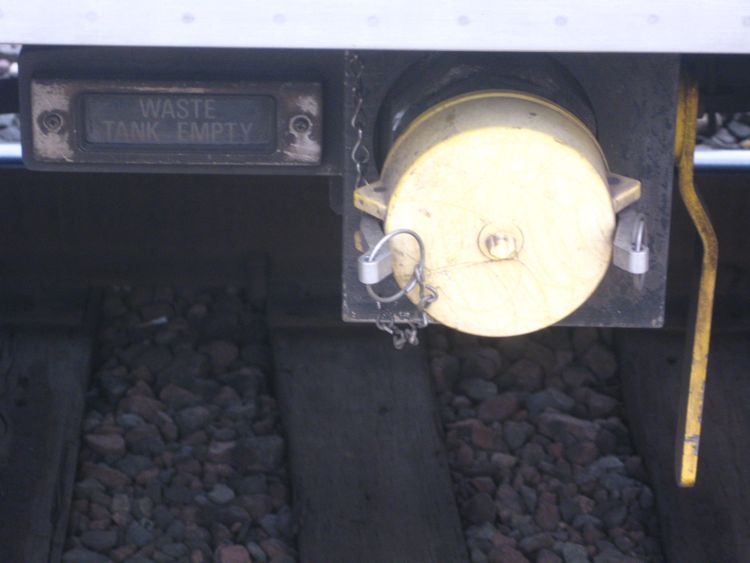
We could easily recreate Venice Beach right her in Fullerton

We will soon be on one just like this!
The Freight Trains Roar Through The Fullerton Station

This trains seemed to be a mile long!
Did you know? - Containerization is a system of intermodal freight transport cargo transport using standard shipping containers (also known as 'ISO containers' or 'isotainers') that can be loaded and sealed intact onto container ships, railroad cars, planes, and trucks. Containerization has revolutionized cargo shipping. Today, approximately 90% of non-bulk cargo worldwide moves by containers stacked on transport ships; 26% of all containers originate from China.

This guys seemed to squeak through!
Did you know? - The BNSF Railway (reporting mark BNSF), formerly known as the Burlington Northern and Santa Fe Railway, is an American freight railroad company headquartered in Fort Worth, Texas; it is one of four remaining transcontinental railroads and one of the largest freight railroad networks in North America. Only the Union Pacific Railroad, its primary competitor for Western U.S. freight, is larger in size. The BNSF Railway moves more intermodal freight traffic than any other rail system in the world.

BNSF Route

Coffee, hot chocolate, bagels and muffins start the day

He picked up speed and headed south fully loaded!
Did you know? - Intermodal freight transport involves the transportation of freight in an intermodal container or vehicle, using multiple modes of transportation (rail, ship, and truck), without any handling of the freight itself when changing modes. The method reduces cargo handling, and so improves security, reduces damages and losses, and allows freight to be transported faster. Reduced costs versus over road trucking is the key benefit for intracontinental use. The negative is that it takes longer than normal truck delivery would.

Oh oh... Trouble is brewing!

The freight had two "pusher locomotives"
Did you know? - A bank engine (United Kingdom/Australia) (colloquially a banker) or helper engine or pusher engine (North America) is a railway locomotive that temporarily assists a train that requires additional power or traction to climb a grade (or bank). Helpers/bankers are most commonly found in mountain divisions (called "helper districts" in the U.S.), where the ruling grade may demand the use of substantially greater motive power than that required for other grades within the division.
A bank engine (United Kingdom/Australia) (colloquially a banker) or helper engine or pusher engine (North America) is a railway locomotive that temporarily assists a train that requires additional power or traction to climb a grade (or bank). Helpers/bankers are most commonly found in mountain divisions (called "helper districts" in the U.S.), where the ruling grade may demand the use of substantially greater motive power than that required for other grades within the division.

He is off and so are we!
Over The Tracks To Catch Our Train

Getting their early morning exercise

James and Linda head for the elevator

Made it!

The freight returned a few minutes later.... empty!

The North American/Rockwell contingent!

Swapping stories

Our train arrives

We await patiently so we can get to the bar

"Let's get going"
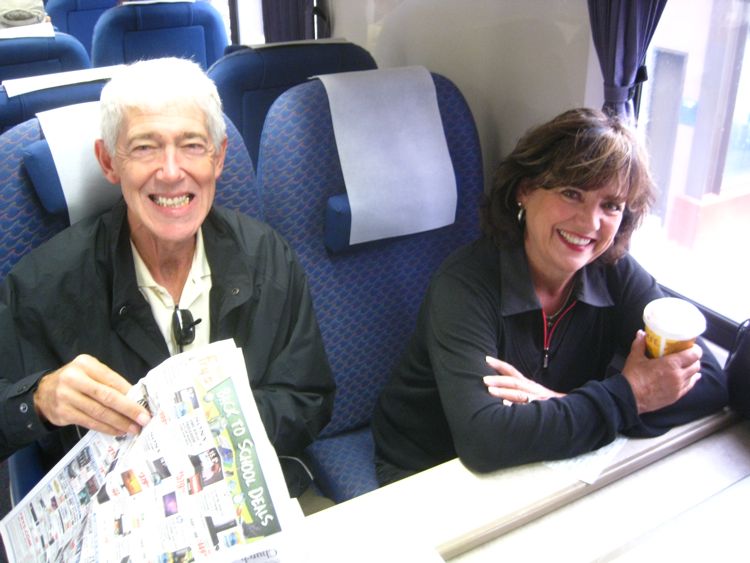
Tom and Bunnaford
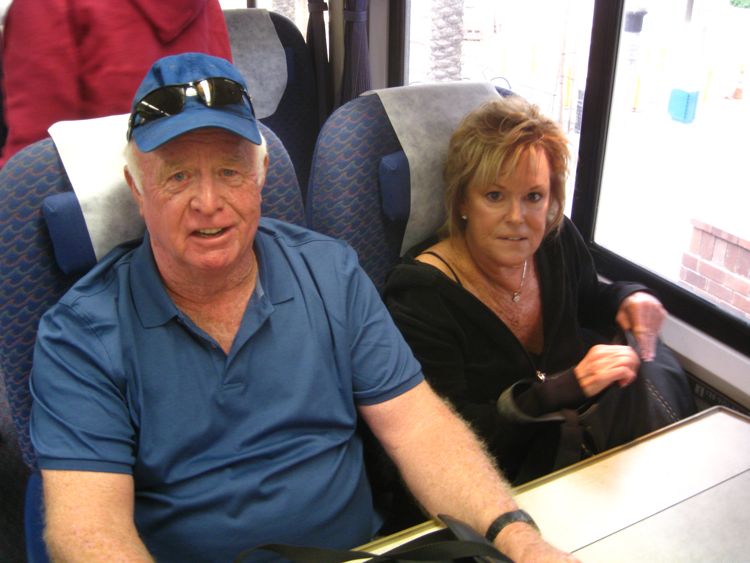
Don and Mary

Ernie and John

Mike and Margie


First Stop, Anaheim
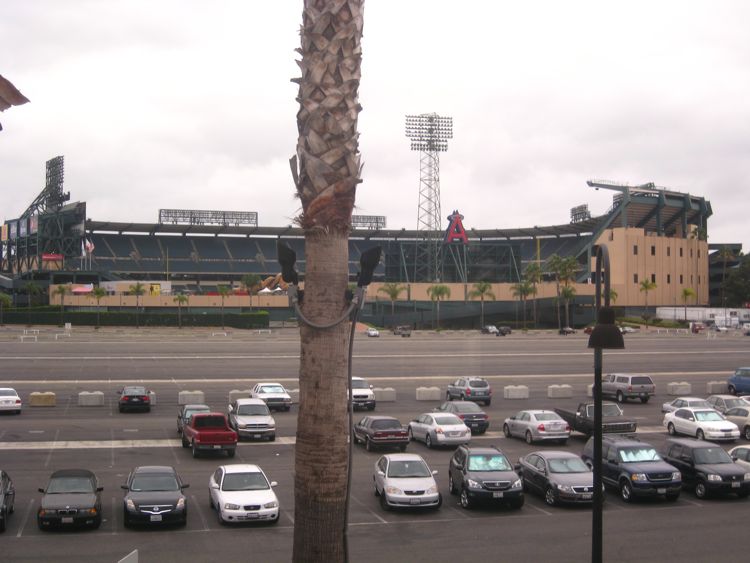 The stadium seems quite this morning
The stadium seems quite this morning
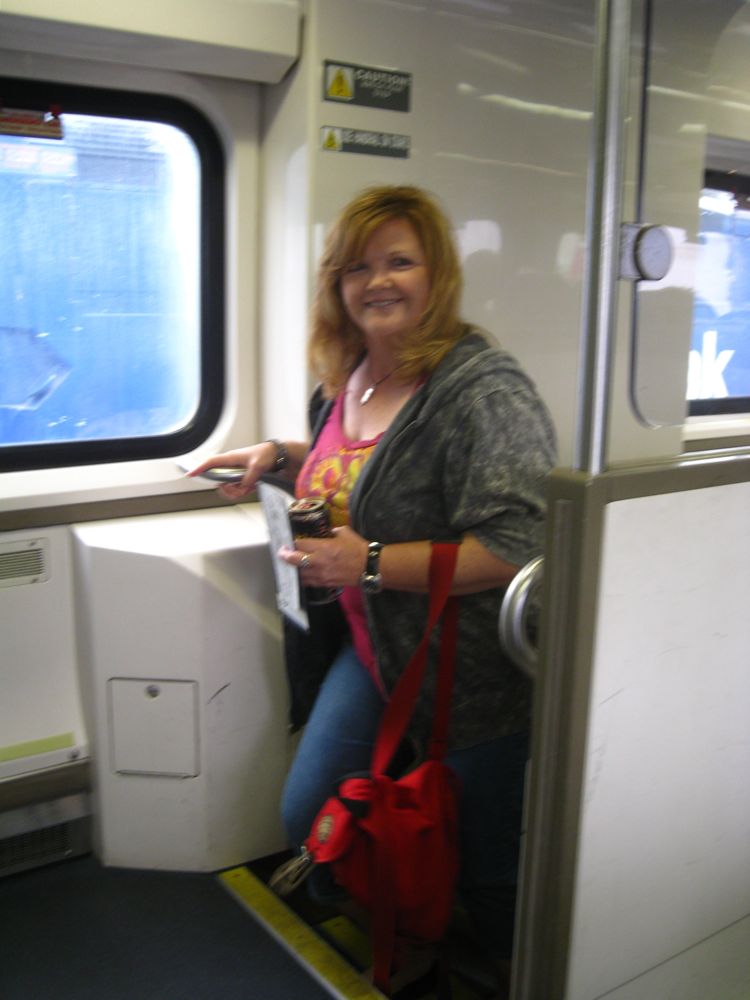
Robin and family joined the fun

Talking to Susie

James and Linda settled in

Bob and Nick

Almost there
Arrival Right On Time At Solano Beach

The racetrack is about 1.1 miles from the station!









Solano Beach
Did you know? - Until 1923, the main area known as Solana Beach was originally called Lockwood Mesa. The area first settled by the George H. Jones family in 1886. When Lake Hodges Dam was built in 1917-18, the area encompassing Solana Beach began to develop rapidly. The creation of the 12,000-acre (49 km2) Santa Fe Irrigation District in 1918 ensured that the area from Rancho Santa Fe through Solana Beach would prosper and expand.
The coastline from Solana Beach to Oceanside began to boom in the early 1920s. In 1922 Colonel Ed Fletcher, an early community leader and developer, purchased 140 acres (0.57 km2) at $20 per acre from farmer George H. Jones to develop the town of Solana Beach, with the help of his brother-in-law Eugene Batchelder.
To provide access to the beach for the development, hydraulic water pressure was used to erode away tons of earth and create the Fletcher Cove entry and beach. This took one man three months with a fire hose, using water that was coming over the spillway at Lake Hodges Dam. The beach was opened with great fanfare including horse races on the beach on July 4, 1925.

Up the ramp and head for the Tidewater Cafe
